The ultimate medium format film SLR.
Franke & Heidecke had been making twin lens reflex medium format film cameras since 1920 until they decided to compete with Hasselblad with an SLR medium format design named the SLX in 1976. This quickly got a reputation as one awfully unreliable piece of hardware with common failures including the film drive motor and the lens aperture motor. Hasselblad was not about to be replaced as the fashionistas’ camera of choice, a reputation earned over several decades by the Swedish camera maker using Zeiss lenses.
But Rollei kept banging away and by the time the Rolleiflex 6003 Professional was introduced in 1996, the product was close to perfection. One later iteration saw the addition of AF, hardly an essential in this type of body and dictating replacement of all those expensive optics, but the 6003 Pro improved on the dated Hasselblad’s design in every way possible.
The design was Bauhaus modern, the oversized controls on the body and lenses perfectly conceived and the detachable handgrip, which could lock at various angles, was a piece of design genius. It made a clunky studio camera into a fully fledged street operator, albeit at the price of a lot of dollars and avoirdupois. This camera was heavy!
The images below are of (and by) the one I owned.
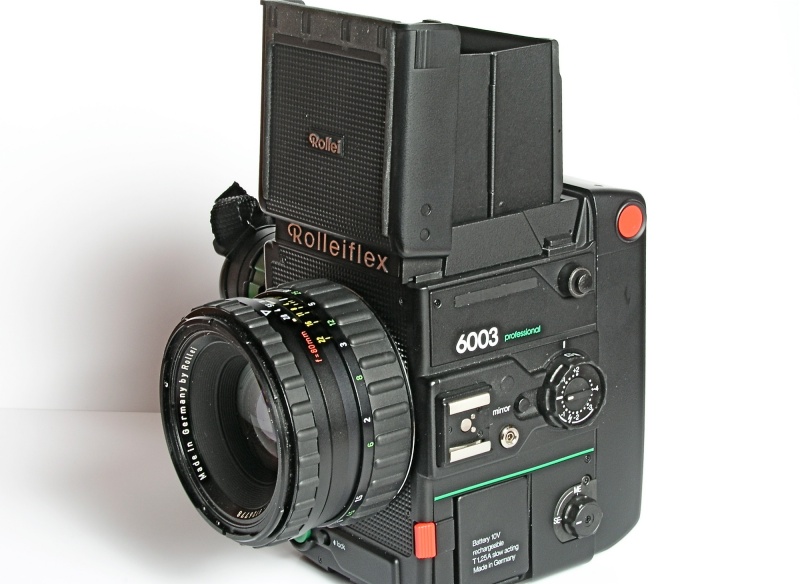
Large, clear controls. Note the Multiple Exposure dial, lower right.
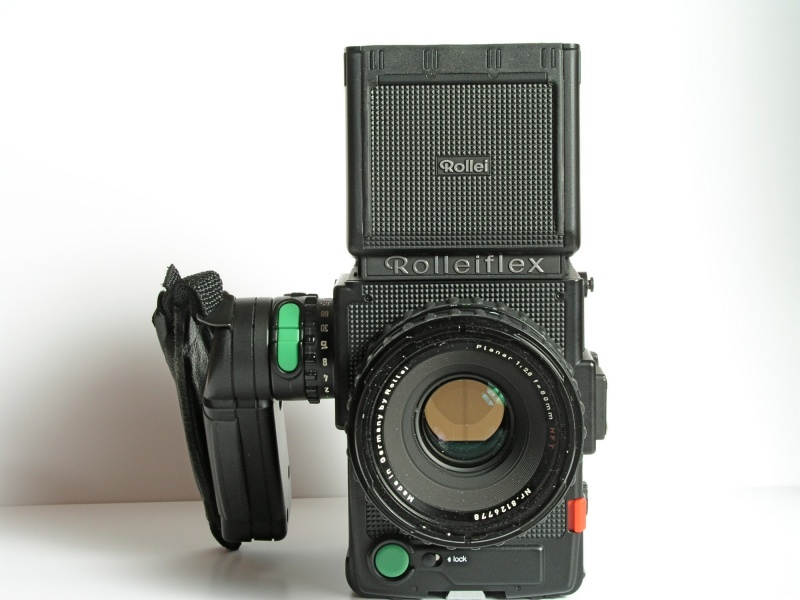
Bauhaus design influences everywhere.
Beautifully designed and integrated handgrip with adjacent green shutter release.
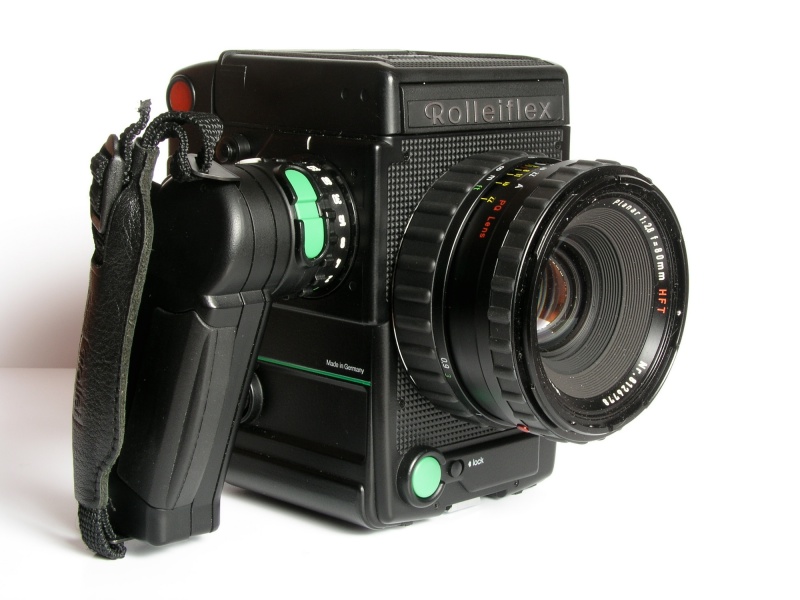
The collapsible waist-level hood could be replaced with a 45 degree pentaprism.
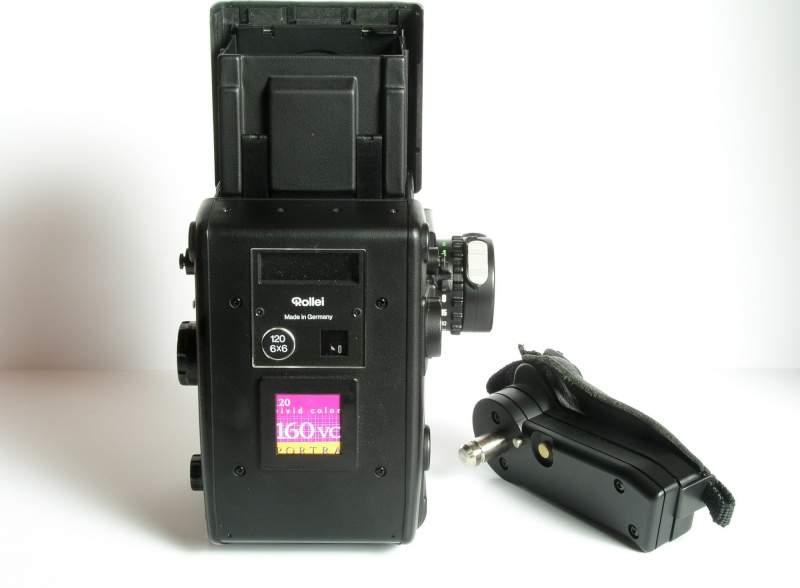
Rear view. I was always a Kodak man.
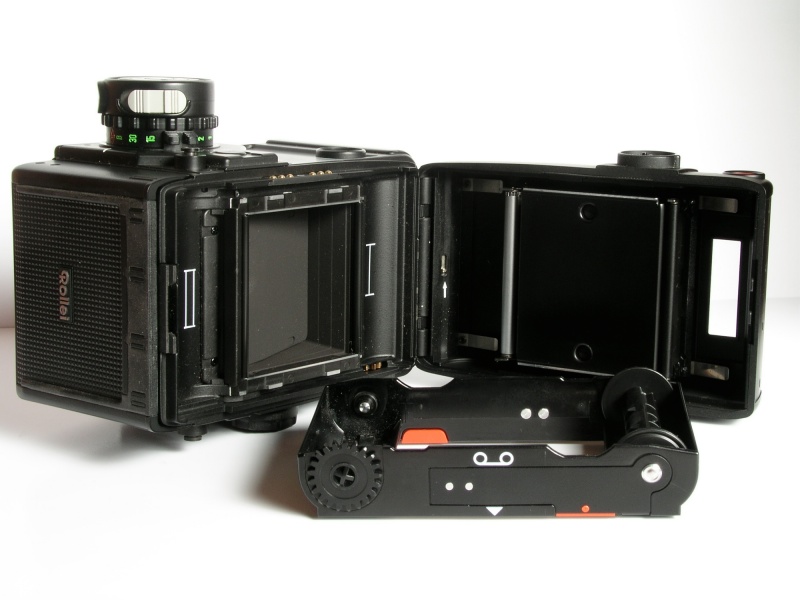
Compact, inexpensive film holders could be preloaded for rapid reloading.
Unlike the tortuous film path in the Hasselblad, Rollei did it right.
Fully interchangeable backs were also available.
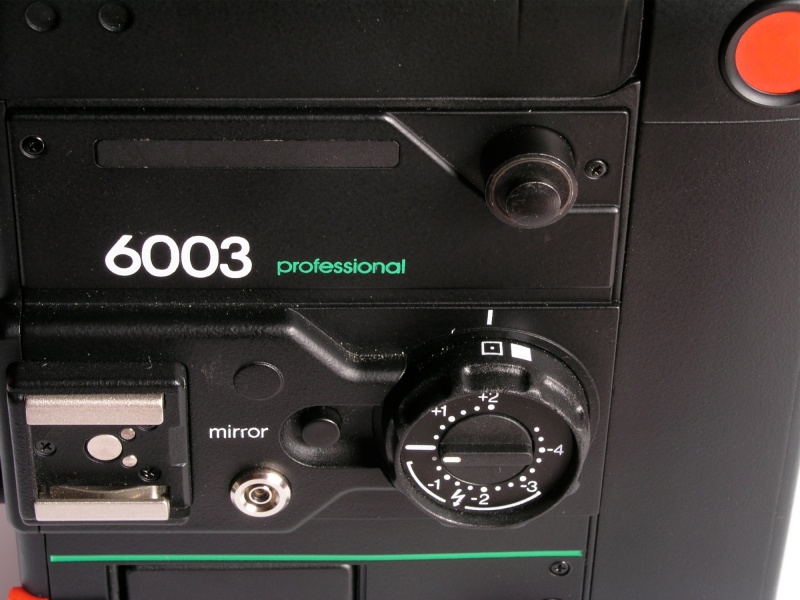
Easy to use exposure compensation dial. The mirror could be locked-up.
Spot/average metering control on the periphery. Modern flash shoe.
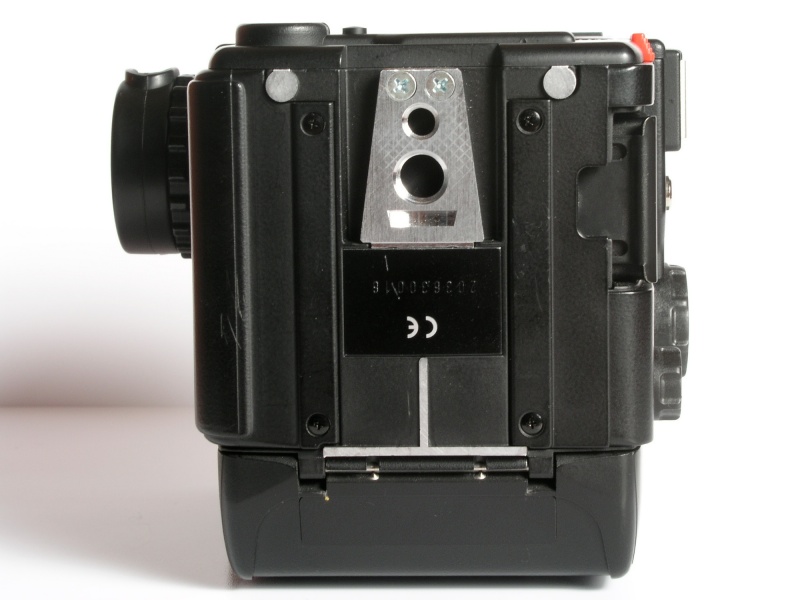
Built-in QR tripod base.
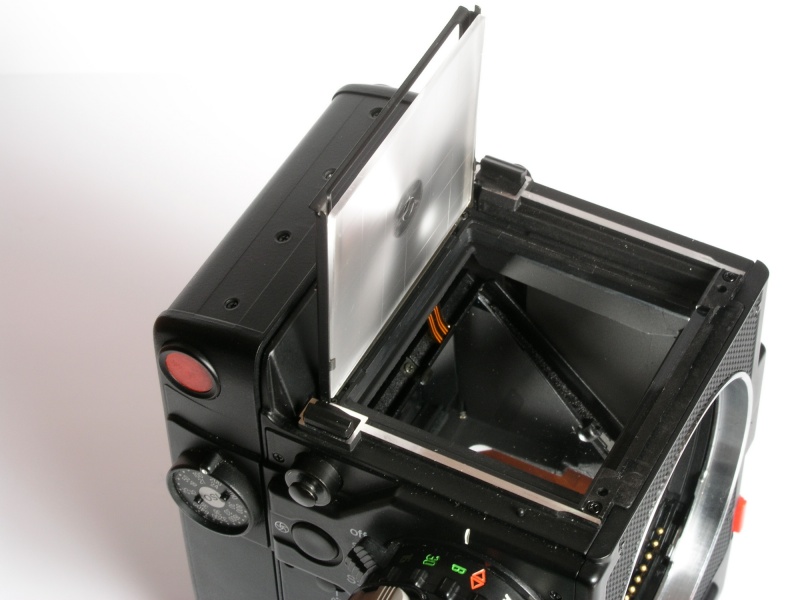
Easily changed focusing screen. I used
an aftermarket Beattie Intenscreen, far brighter than stock.

High capacity NiCd battery could be swapped in seconds and powered the
film motor, the exposure meter and the lens’s diaphragm.
The fuse protects the battery from overcharging.
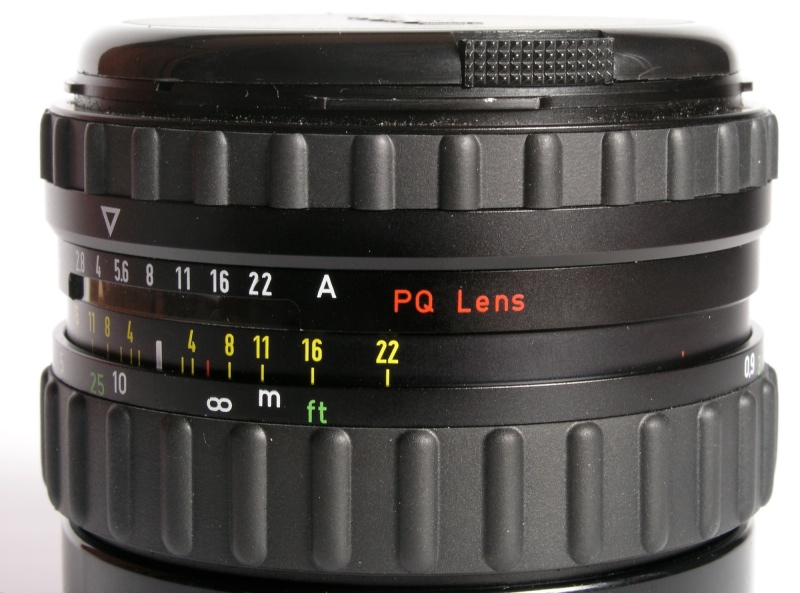
The controls and markings on the lens were outstanding.
Operation with gloves was very easy.
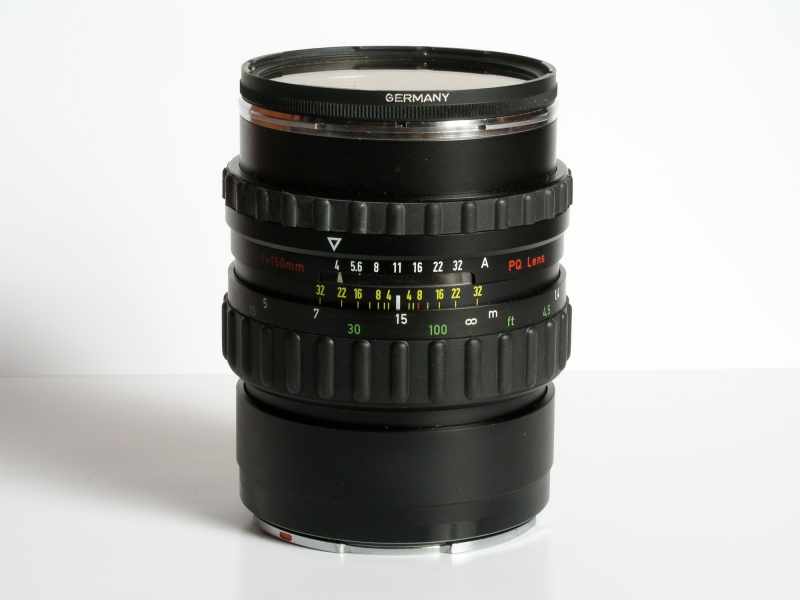
150mm Zeiss Sonnar portrait lens.
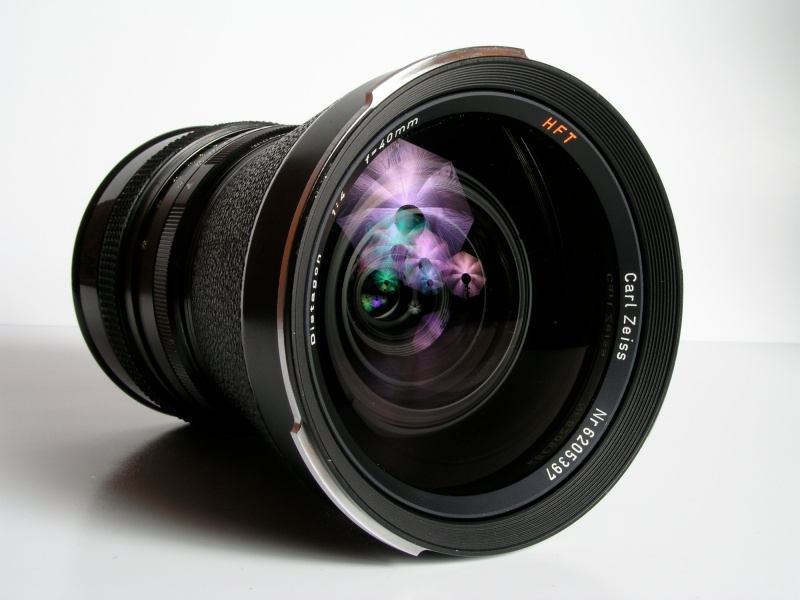
Tack sharp – and massive – 40mm Zeiss Distagon wide-angle optic.
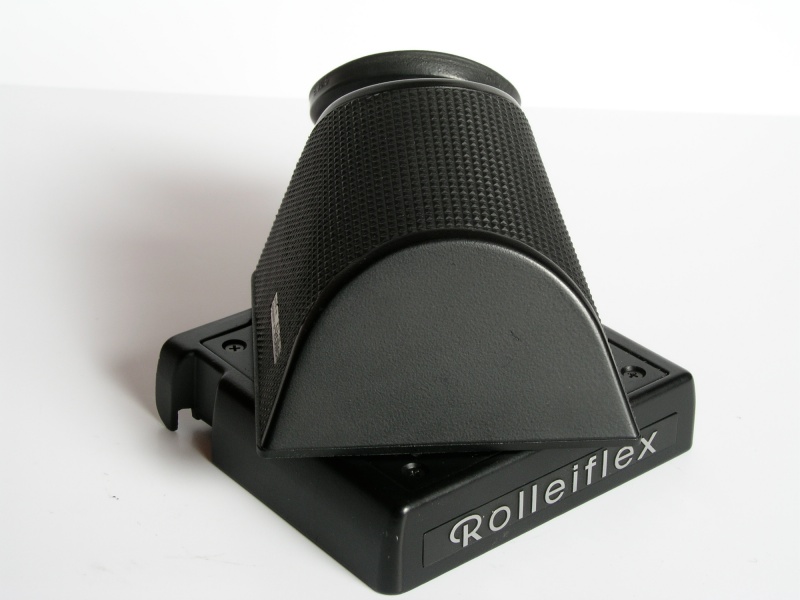
The 45 degree prism finder could be rotated.
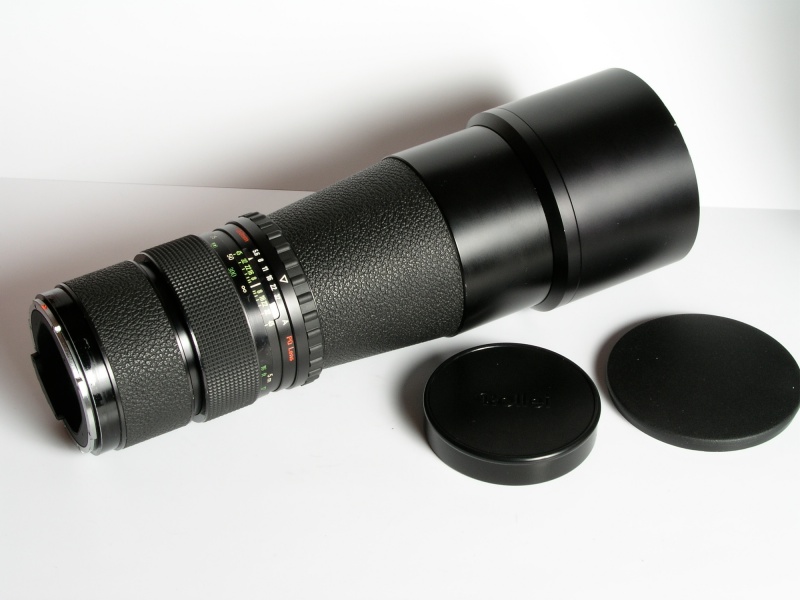
Massive – and massively imposing – 350mm Zeiss Tele-Tessar telephoto.
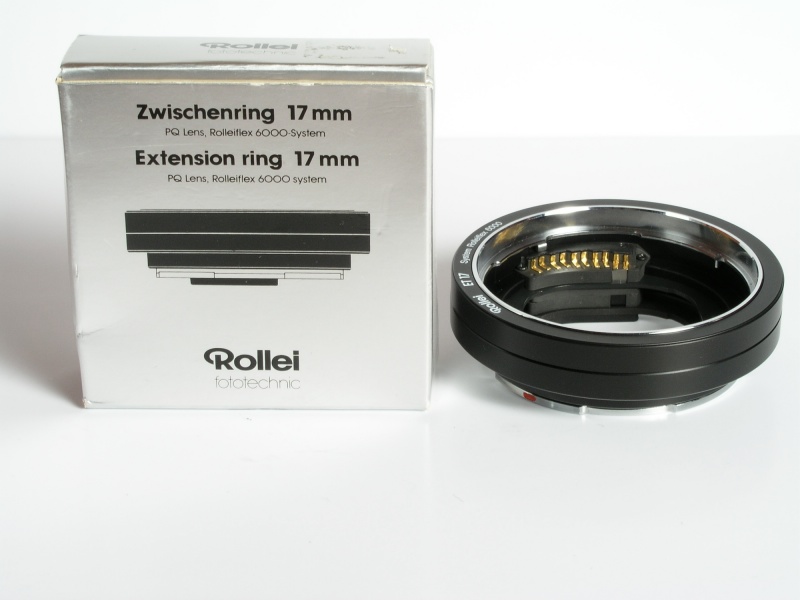
Extension tube showing electronic contacts for the lens.
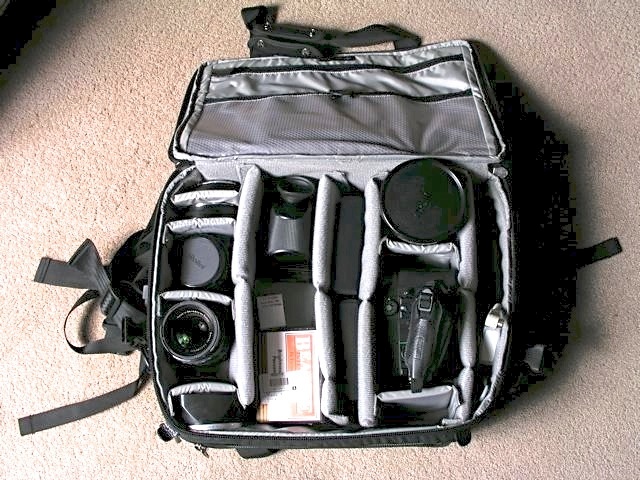
The outfit in a LowePro backpack.
Where the Hasselblad was created in a mechanical age, the Rollei was clearly a child of the electronic era. Unlike with the Hasselblad, the Rollei had motorized film advance (available for extra on special Hasselblad models, and still as clunky as it gets), an instant return mirror where the Hasselblad had none, and far superior ergonomics. It was an integrated whole, needing no add-on gadgets. The accurate TTL meter was built-in, you could opt for aperture-priority, shutter-priority or fully automatic program modes, single or continuous shooting, spot or average metering and even TTL flash metering on the 6008 variant. There was a full bright red LED status readout of all the vital signs at the base of the finder window and once you attached the 45 degree prism the outfit would really sing at a comfortable chest/eye level. There were two shutter releases – green in the above images – the one perfectly placed for use with the handgrip. Hand held use for close-ups was easy with a couple of extension tubes which conveyed all the information needed to the camera and lens using electrical contacts. Even the aperture was electronically controlled by a linear motor – advanced in its day, now stock in most DSLR lenses.
Hasselblad’s claimed advantage was that all the lenses for the 500C and later bodies had in-lens leaf shutters, the long-lived Synchro-Compur. This purportedly added to the cost of lenses, not that shutterless Rollei/Zeiss lenses seemed any cheaper. Rollei countered by adding selected lenses with leaf shutters, which have the advantage that they can be sync’d with flash at any speed, unlike focal plane shutters, allowing for easier balancing of ambient light and motion blur. Eventually Schneider also offered lenses for the Rollei, just as it did for the Hasselblad, making for a very large lens selection indeed for both marques. If you could afford them, that is. These optics were insanely expensive, not helped by a perenially strong Deutschemark and an overfed and overpaid German worker. Nothing changes.
I used mine with a Nikon Coolscan 8000 film scanner which would take a few minutes to render a 4000 dpi scan for a theoretical definition of 81mp, but in practice with all the variables, the vagaries of film and scanner and so on, it looks more like 10mp on my display using Lightroom.
And that was the Rollei’s undoing. When the 12mp Canon 5D was released as the first full frame affordable DSLR, a first look at the results doomed the Rollei to eBay. The Canon had superior resolution and color rendering, the lenses were outstanding and much faster, the body was a fraction of the bulk and cost of the Rollei and if you wanted 3+ fps, no problemo. But, best of all, there was no need to waste precious time scanning and then retouching the spots and scratches conferred by the film lab. And that was after first waiting to get the film back.
But my, my, what a well designed and fun to use machine this Rollei was. It always reminded me of what Lord Chesterfield said of sex. “The pleasure momentary, one’s position ridiculous and the cost damnable”. I sold my outfit before the penny dropped in the mass market that MF film was dead. A year or two after sale the price of used Rollei MF SLR gear had dropped 70% and Rollei had gone bust. Such is technological obsolescence.
It mystifies me why anyone would buy one today when a like-priced Nikon D600, with lenses a fraction of the cost, will leave the Rollei in the dust in every regard. Further, spares are unavailable and qualified technicians who can fix the electronics are even rarer. Finally, be prepared to procure replacement cells and soldering skills when the dated NiCd battery gives up the ghost. But as a design and display exercise, it’s as good as medium format film cameras ever got.
If you really must get into MF film gear SLRs, I highly recommend a Hasselblad. The bodies are mechanical, aesthetically beautiful to hold and behold, easily fixed and abundantly available. Their dated features are more than compensated by the ease of repair and the ready availability of spares and technicians, even if Lord Chesterfield’s pricing mechanism comes to mind.
As for all you hear about the plasticity and rendering and blah, blah, blah of medium format film, forget it. Pure claptrap engaged in by those with too large an investment in dead tech, now worthless.
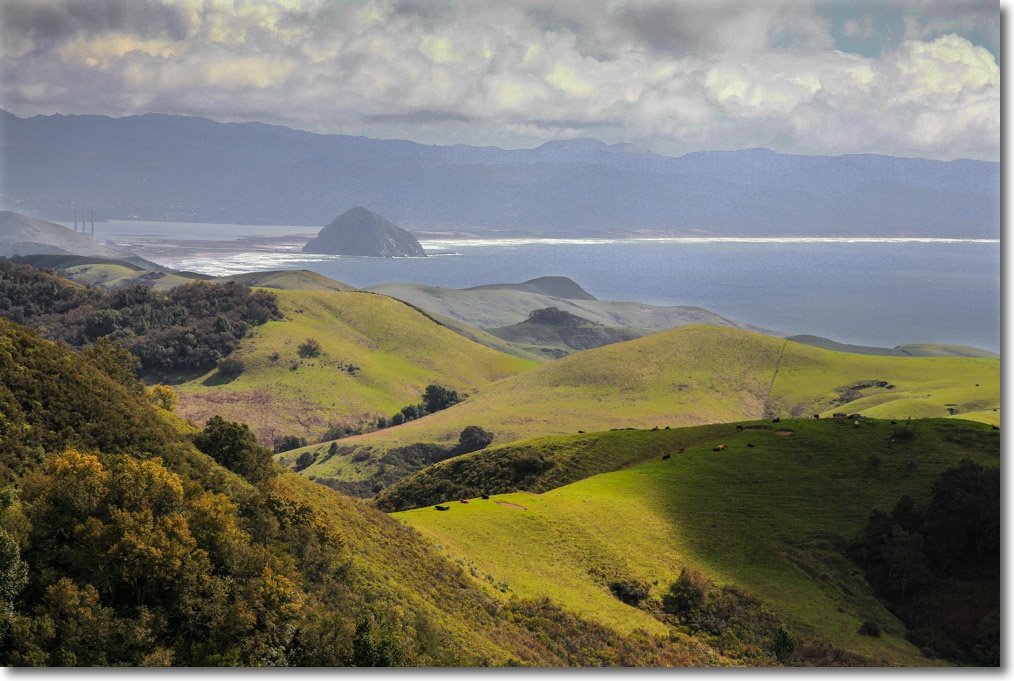
Morro Rock from Highway 46. 350mm Tele-Tessar.
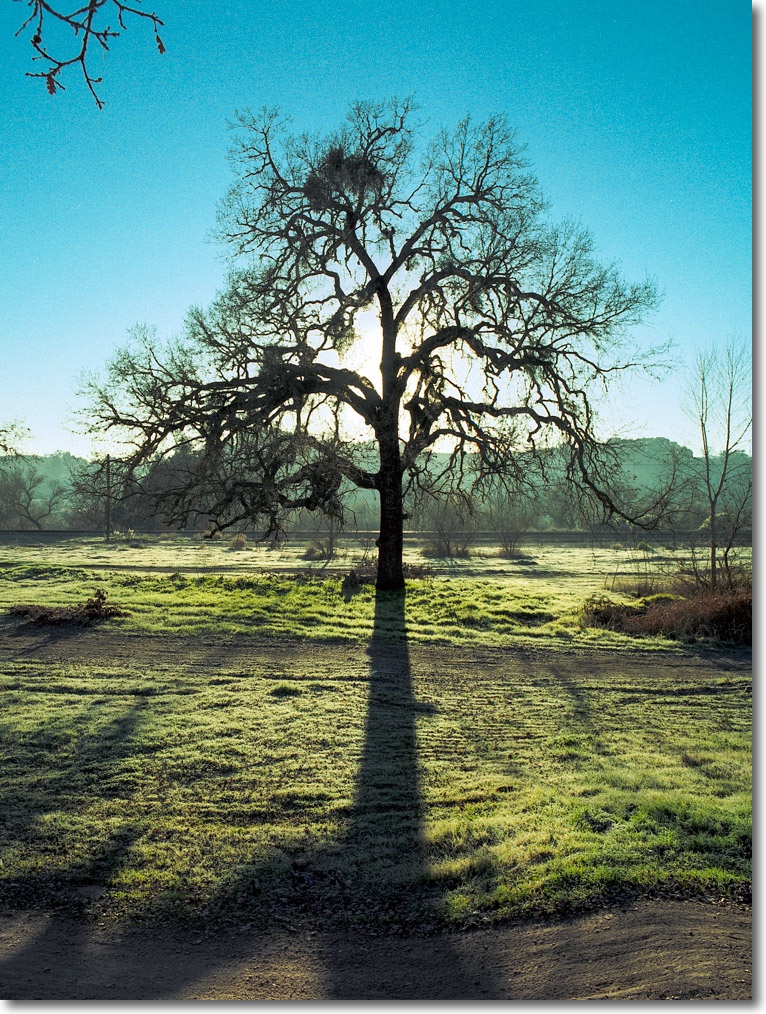
Sunrise, Templeton, CA. 40mm Distagon.

Highway 46 at Highway One. 150mm Sonnar.
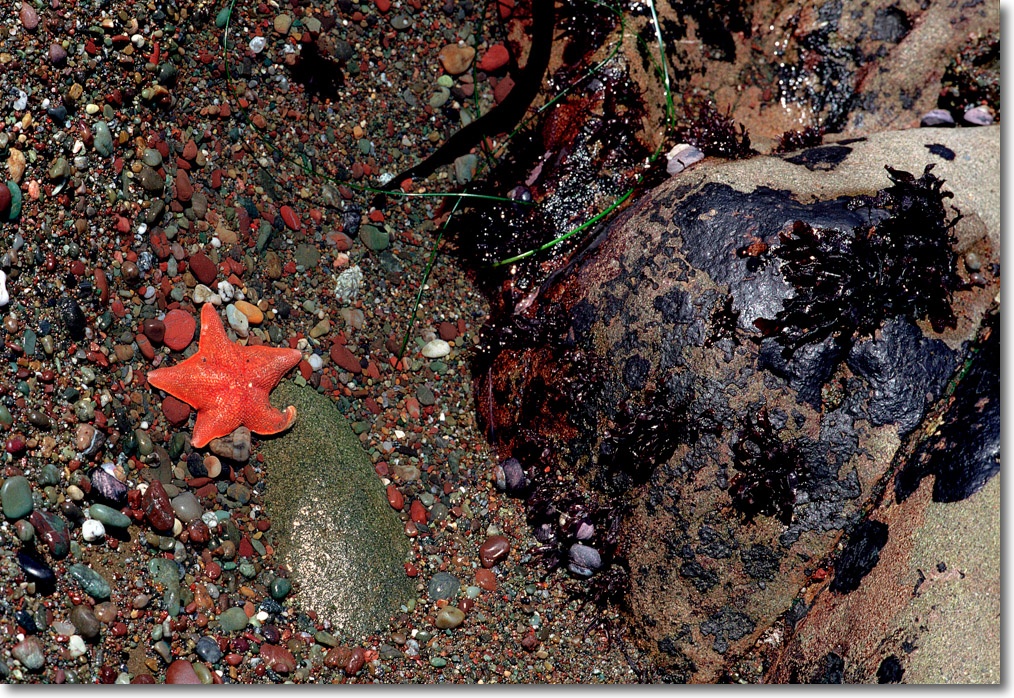
Starfish, Moonstone Beach. 80mm Planar.
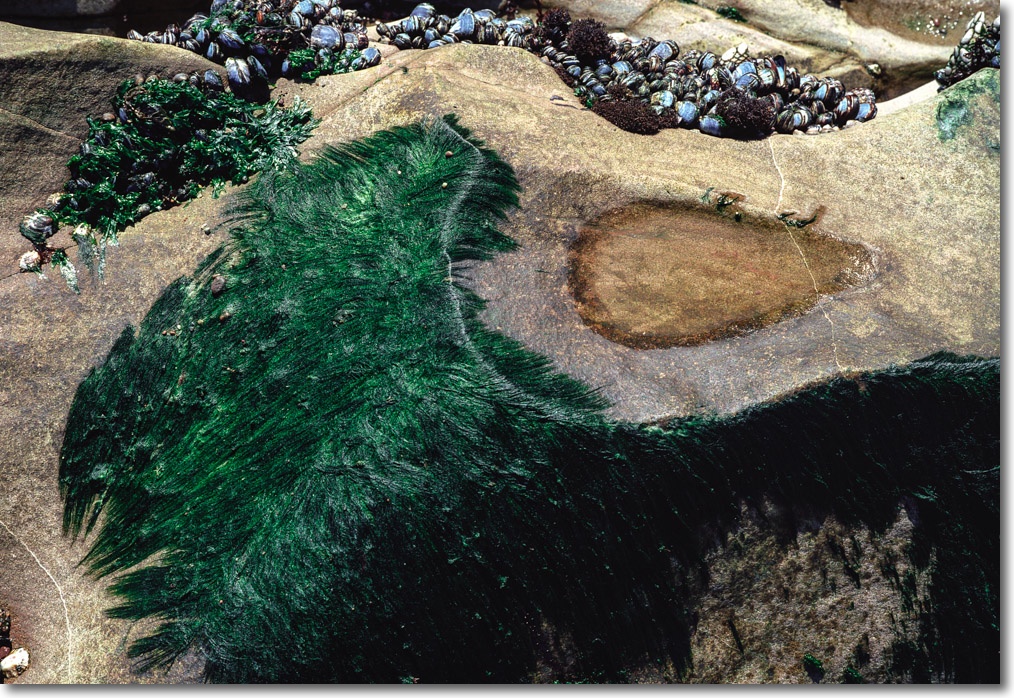
Moss and molluscs, Moonstone Beach. 80mm Planar.
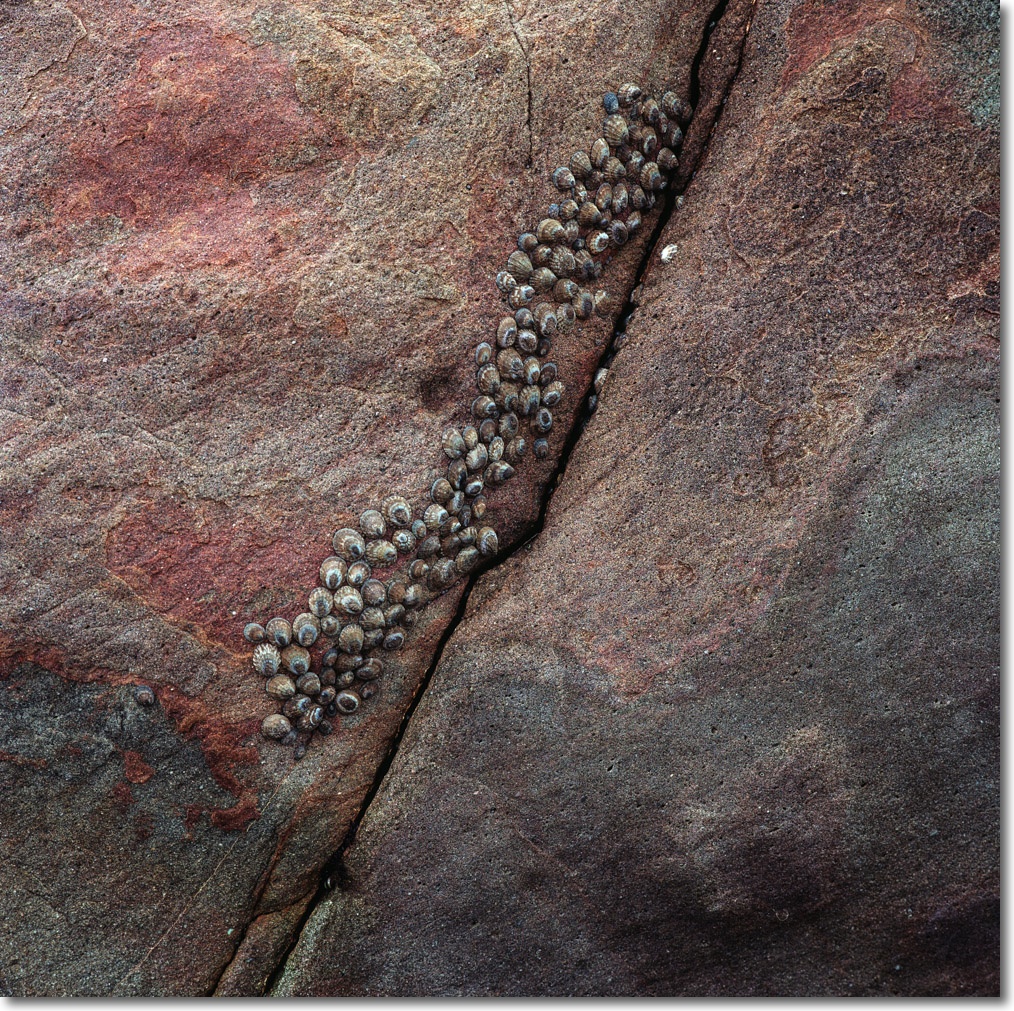
Clams and rock, Moonstone Beach. 150mm Sonnar.
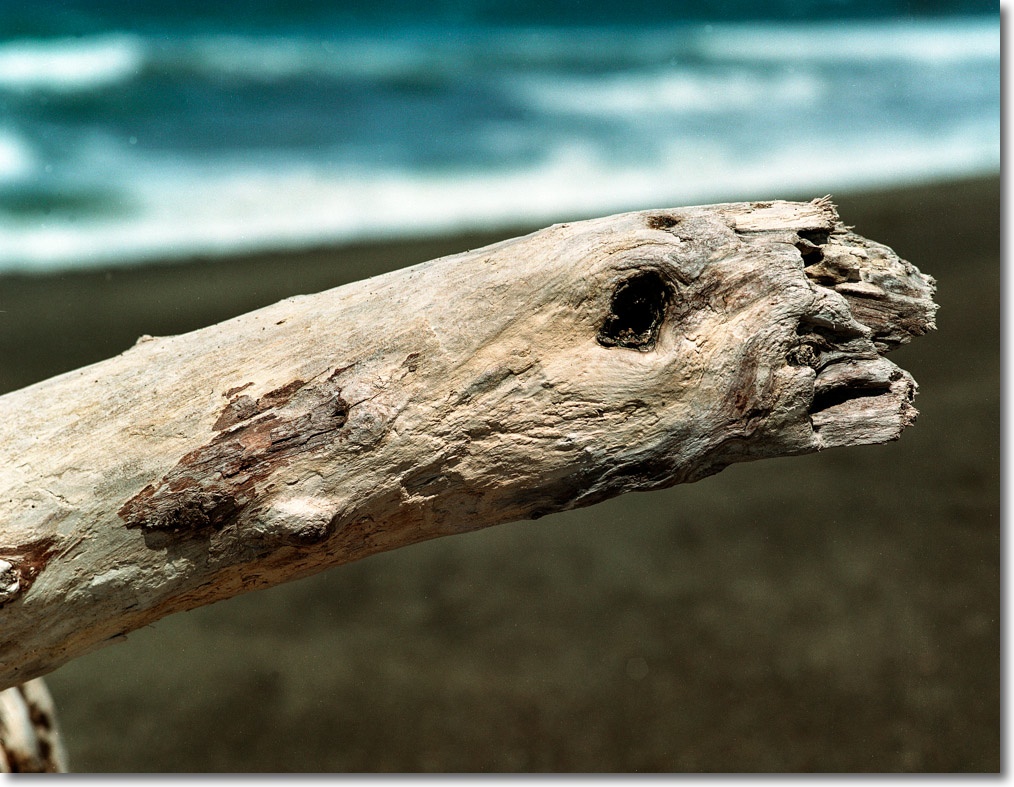
Driftwood. My son calls this one ‘The Snake’ and he was the one who spotted it.
“Daddy, daddy! Look, look! A snake!”
150mm Sonnar – 9+ 17mm Extension tubes.
It’s not the camera, it’s the eye of the photographer, and choosing the right light.
Wonderful images; thank you Thomas for sharing them. The Rollei nostalgia is the icing on the cake.